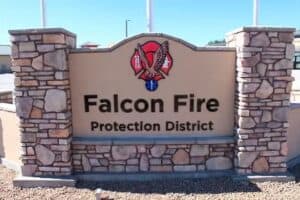Carbon monoxide (CO) is a colorless, odorless and tasteless gas that kills. According to the Centers for Disease Control and Prevention, more than 400 people die each year in the U.S. because of CO poisoning not related to fires; which is the reason the Falcon Fire Protection District recommends that all residents install and maintain carbon monoxide alarms in their homes.Carbon monoxide is created when fuels such as gasoline, wood, natural gas and propane burn incompletely. Fuel-burning home heating and cooking equipment can produce CO, as can equipment powered by internal combustion engines (portable generators, cars, lawn mowers, etc.). Exposure to CO can make a person feel sick and can be fatal.Carbon monoxide alarms are vital in the prevention of CO poisoning. The alarms can be battery-operated or AC-powered (with or without a battery backup). Different brands and models have varying features, such as digital readouts or voice notification, so each person must decide which CO alarm best fits his or her particular situation. CO alarms should carry the label of a recognized testing laboratory.Regardless of the brand or model, CO alarms must be properly installed, maintained; and replaced when they have exceeded the life expectancy established by the manufacturer. This information can be found in the user guide or on the back of the detector. (See the example in the graphic.)The National Fire Protection Association recommends the following:CO alarm installation: CO alarms should be installed in a central location outside each sleeping area and on every level of the home. Follow the manufacturerís instructions for placement and mounting height. For the best protection, interconnect all CO alarms throughout the home so that when one sounds, they all sound.Testing: Test CO alarms at least once a month to ensure they are operating properly.Maintenance: Follow manufacturer guidelines for battery replacement intervals; if no schedule is recommended, change batteries once a year. Use the type of battery recommended by the manufacturer.Replacement: CO alarms have a life expectancy of about five to seven years, according to various manufacturers and online resources. After that, the devices should be replaced.Additional tips from NFPA:
- Know the sounds a particular CO alarm makes. The audible alert for elevated CO levels will be different from a low battery or end-of-life signal.
- Read the manufacturerís instructions. If those are not available, obtain the make and model from the alarm itself and see if a manual is available online.
- If the audible trouble signal sounds, check for low batteries. If the battery is low, replace it. If it still sounds, call the fire department.
- Immediately move outside to fresh air.
- Account for everyone in the home.
- Call 911 and wait for emergency personnel.




